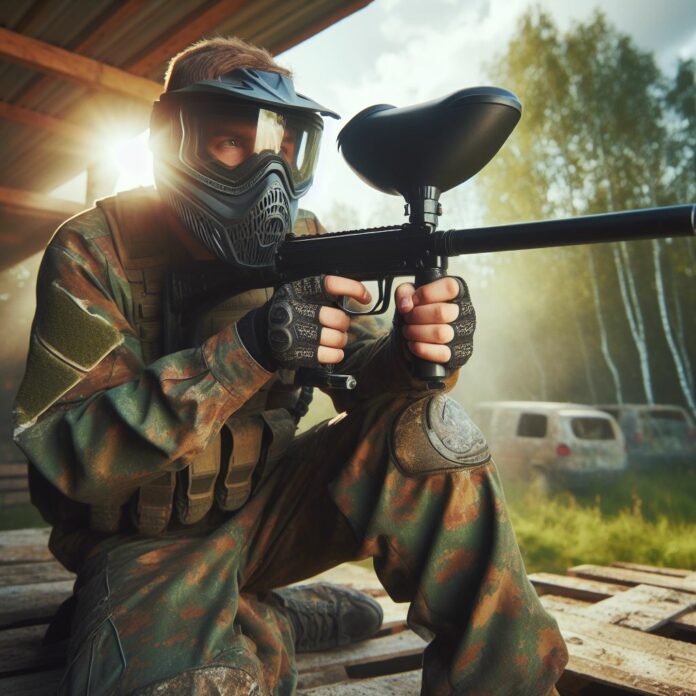Paintball markers, also known as paintball guns, are the primary equipment used in the game of paintball. They propel paint-filled capsules at high speeds, creating a thrilling and competitive experience.
One crucial aspect is a paintball marker’s BPS, which stands for Balls Per Second. Understanding BPS is essential for players as it directly affects the marker’s performance and gameplay dynamics.
BPS refers to the number of paintballs a marker can shoot in one second. It is a crucial metric that determines the firing speed of the marker.
BPS is important in paintball because it affects the rate of fire, accuracy, and overall effectiveness of a player on the field.
To measure BPS accurately, specific tools are utilized, such as a chronograph or radar device. These devices measure the speed of paintballs as they exit the marker’s barrel, providing an accurate measurement of the marker’s BPS.
There are established standards and regulations for BPS measurement to ensure fair gameplay and player safety.
Several factors can influence the BPS of a paintball marker. The marker type, hopper type, air source, and paint quality can all affect the firing rate.
Upgrading the marker, using a higher-performance hopper, and utilizing high-pressure air sources are effective ways to increase the BPS of a marker.
It is crucial to consider safety when dealing with high BPS. Players must follow safety guidelines, wear appropriate protective gear, and ensure that the field and equipment are in optimal condition.
By understanding BPS and adhering to safety considerations, paintball players can enjoy an exciting and safe gameplay experience.
What is BPS?
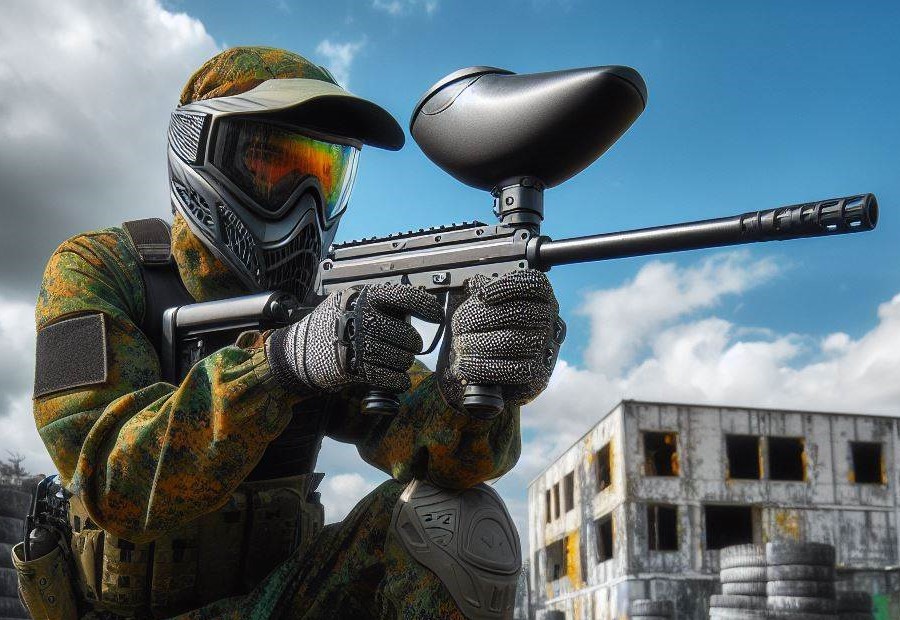
BPS, or balls per second, is a measurement used in paintball to determine the rate at which a marker can shoot paintballs. It refers to the number of paintballs that can be fired in one second.
The higher the BPS, the faster the marker can shoot. Different types of paintball markers may have varying BPS capabilities. It is important to note that BPS limits are often regulated in paintball games for safety reasons.
The maximum BPS allowed in a game can vary depending on the field or event rules. Some markers have adjustable settings that allow players to control the BPS according to their needs.
Understanding what BPS is and how it is regulated is crucial for paintball players to ensure fair and safe gameplay. By knowing the BPS of their marker, players can also make informed decisions when choosing the right equipment for their style of play.
What does BPS stand for?
BPS stands for “balls per second” in the context of paintball. It is a measurement used to determine the firing rate of a paintball marker, which refers to the number of paintballs that can be fired from the marker in one second.
The BPS measurement is important in paintball because it affects gameplay and the player’s ability to eliminate opponents.
Paintball markers can have varying BPS rates, and it is often regulated in competitive play to ensure fair gameplay and safety. Different factors can affect the BPS of a marker, such as the type of marker, hopper type, air source, and paint quality.
To measure the BPS of a paintball marker, specific tools are used, such as chronographs or radar devices. These devices measure the speed at which the paintballs are propelled from the marker, allowing players to determine the BPS.
If players want to increase the BPS of their marker, they can consider upgrading the marker itself, using a higher-performance hopper, or utilizing high-pressure air sources.
It is important to note that safety considerations should be taken into account when dealing with high BPS markers, as the increased firing rate can pose risks if proper precautions and protective gear are not used.
When choosing a paintball marker, understanding what BPS stands for and its significance in gameplay can help players make informed decisions and enhance their paintball experience.
Why is BPS important in paintball?
BPS, or Balls Per Second, is an essential factor in paintball. It refers to the number of paintballs that can be fired from a paintball marker in one second. The importance of BPS in paintball lies in the gameplay dynamics it creates.
A higher BPS allows players to shoot more paintballs rapidly, increasing their chances of hitting opponents and achieving objectives. It adds an exciting and intense element to the game, making it more fast-paced and challenging.
Without sufficient BPS, players may find it difficult to keep up with faster opponents or effectively cover a target area.
BPS also affects strategy and tactics in paintball as players must consider their rate of fire and timing to maximize their chances of success. Furthermore, BPS impacts the overall experience and enjoyment of players.
The adrenaline rush and thrill of rapid fire can enhance the excitement of the game. It adds a level of competition and skill as players strive to improve their BPS and become more proficient in their shooting abilities.
How is BPS Measured?
BPS, or Balls Per Second, is a measure of the firing rate of a paintball marker. This rate determines how many paintballs the marker can shoot in one second.
BPS is typically measured using a chronograph, which measures the velocity of the paintballs as they are shot from the marker.
- The paintball marker is adjusted to a specific firing mode, usually semi-automatic or fully automatic.
- A paintball is loaded into the marker, and the marker is aimed at the chronograph.
- The player then fires the marker, and the chronograph measures the velocity of the paintball.
- The chronograph calculates the BPS by measuring the time it takes for the paintballs to travel a certain distance.
- Some markers also have built-in technology that tracks and displays the BPS on a digital screen.
It’s important to note that the BPS of a marker may be limited by certain rules and regulations in paintball games or tournaments. It’s always a good idea to check the specific guidelines before using a marker with a high BPS.
When measuring BPS, proper safety precautions should be followed, such as wearing protective goggles and ensuring the marker is pointed in a safe direction.
It’s also recommended to have the marker inspected and serviced regularly to maintain accuracy and safety.
What tools are used to measure BPS?
To measure BPS (balls per second) in paintball, various tools are used. These tools are essential for ensuring fair play and monitoring the performance of players and equipment.
Below is a table showcasing the tools commonly used to measure BPS:
| Tool | Description |
| Chronograph | A device that measures the velocity of a paintball as it exits the marker. It calculates the BPS based on this velocity. |
| Radar Chronograph | A more advanced version of the chronograph that uses radar technology to accurately measure the speed of the paintball. |
| Laser Sensor | This tool utilizes a laser-based sensor system to measure the speed and trajectory of the paintball. |
These tools are precise and reliable, ensuring accurate measurement of BPS in paintball. They are used during practices, games, and competitions to enforce rules and maintain a level playing field.
It is important to note that different organizations or leagues may have specific standards and regulations for BPS measurement. These standards may require the use of certain approved tools or have specific measurement criteria to ensure fairness and safety.
By utilizing these measurement tools, players and officials can accurately determine the BPS of paintball markers and enforce regulations, allowing for a fair and enjoyable paintball experience.
What are the standards and regulations for BPS measurement?
The standards and regulations for BPS measurement in paintball are crucial to ensure fair and safe gameplay.
The organization that governs and sets these standards is the Sporting Goods Manufacturers Association (SGMA).
They have established specific guidelines to ensure consistency and prevent any potential advantage or disadvantage for players.
Here is a table summarizing the important standards and regulations for BPS measurement:
| Standard/Regulation | Description |
|---|---|
| Maximum BPS Limit | SGMA sets a maximum BPS limit that each paintball marker must adhere to. This limit ensures that the rate of fire remains within a safe and manageable range. |
| Chronograph Testing | All paintball markers are required to undergo chronograph testing before gameplay. This ensures that the BPS of each marker is within the allowed range. Chronographs are used to measure and verify the velocity of the paintballs fired. |
| Referee Monitoring | During gameplay, referees closely monitor the BPS of each player’s marker. This helps to ensure that no player exceeds the maximum BPS limit, maintaining a level playing field for all participants. |
| Mandatory Safety Briefings | Before any paintball event or game, all players must attend a safety briefing where the BPS regulations and standards are explained. This ensures that everyone is aware of the rules and can play safely and responsibly. |
These standards and regulations for BPS measurement are essential to maintain fairness, safety, and integrity in the sport of paintball.
By adhering to these guidelines, players can enjoy the game while minimizing the risk of injury and ensuring a level playing field for all participants.
Factors Affecting BPS
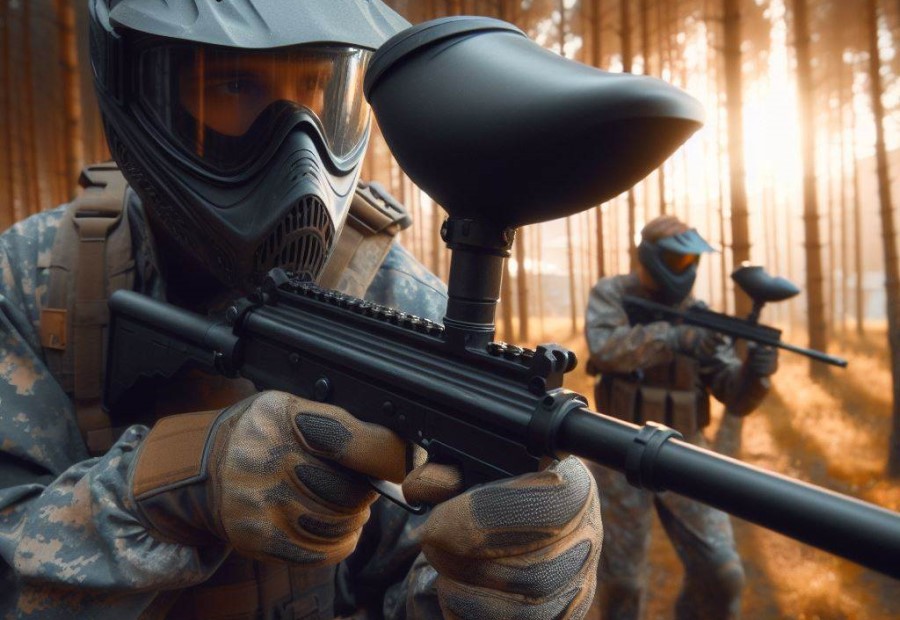
Marker Type
The marker type is a crucial factor that influences the BPS (balls per second) of a paintball marker.
Different marker types possess distinct mechanisms and capabilities that determine their firing speed. Here is a breakdown of various marker types and their typical BPS:
| Marker Type | Typical BPS |
|---|---|
| Pump Marker | 1-3 BPS |
| Mechanical Marker | 5-10 BPS |
| Electronic Marker | 10-20+ BPS |
Pump markers, as the name implies, require manual pumping to fire each shot, resulting in a lower BPS. Mechanical markers have a mechanical firing mechanism and can achieve higher BPS compared to pump markers.
Electronic markers utilize electronic firing systems and can provide the highest BPS due to their fast and efficient operation.
It’s crucial to consider the marker type based on your playing style and the speed of gameplay you prefer. Pump markers are popular among players who enjoy a slower pace and a focus on accuracy.
Mechanical markers are commonly used in recreational games, offering a moderate BPS. Electronic markers are favored by competitive players who require a high rate of fire.
When selecting a paintball marker, take into account your skill level, playing environment, and desired rate of fire to choose the appropriate marker type that suits your needs and preferences.
Hopper Type
When it comes to paintball markers, the hopper type plays a crucial role in the performance of the marker. Different hopper types have varying capabilities and features.
| Hopper Type | Description |
| Gravity-Fed Hopper | A gravity-fed hopper is the most basic type. It relies on gravity to feed paintballs into the marker. It has a lower capacity and is not suitable for high rates of fire. |
| Force-Feed Hopper | A force-feed hopper uses agitators or electronic systems to push paintballs into the marker consistently. It has a higher capacity and can keep up with faster rates of fire. |
| Electronic Hopper | An electronic hopper is the advanced version of a force-feed hopper. It uses sensors and motors to feed paintballs. It offers the highest feed rate and is ideal for professional players or those who require maximum performance. |
Choosing the right hopper type depends on your playing style, level of competition, and budget. If you are a casual player or just starting out, a gravity-fed hopper may be sufficient.
However, if you want to enhance your game and achieve higher rates of fire, a force-feed hopper or electronic hopper would be the better choice.
Air Source
The air source is a crucial component in determining the BPS (balls per second) of a paintball marker.
It provides the necessary pressure to propel the paintballs out of the barrel with sufficient force. Factors to Consider when Choosing an Air Source:
- Type: There are various types of air sources used in paintball, including CO2 tanks and compressed air tanks. Each has its advantages and disadvantages, so it’s important to choose the one that best suits your needs and preferences.
- Size: The size of the air tank will determine how long it can sustain the required pressure. A larger tank will typically provide more shots before needing to be refilled.
- Pressure Output: Different markers require different pressure levels to operate efficiently. It’s essential to ensure that the air source you choose can deliver the required pressure for your specific marker.
- Consistency: Consistent air pressure is vital for maintaining accuracy and shot consistency. Look for an air source that can deliver a stable pressure throughout its use.
Understanding the importance of the air source in achieving optimal BPS is crucial for paintball players. Choosing the right air source type, size, pressure output, and consistency ensures the marker performs at its best and provides a satisfactory gameplay experience.
The development of air sources for paintball markers has evolved over time, with advancements in technology and materials.
From the early use of CO2 tanks to the widespread adoption of compressed air tanks, the paintball community has seen improvements in efficiency, reliability, and safety.
Today, players have various options to choose from when selecting an air source, allowing them to tailor their equipment to their specific needs and preferences.
Paint Quality
Paint quality is an essential factor that significantly impacts the performance of a paintball marker. The use of high-quality paintballs is crucial for achieving consistent and accurate shots.
Poor quality paintballs can exhibit variations in size, shape, and composition, leading to inconsistent flight paths and diminished accuracy.
When paintballs have imperfections or dimples, they are more likely to break prematurely within the marker’s barrel, resulting in issues such as jamming and a decrease in the rate of fire.
It is of utmost importance to select paintballs from reputable brands that are renowned for their high quality and consistent performance.
Before purchasing paintballs, it is highly recommended to thoroughly examine the packaging for any signs of damage or degradation. Exposure to moisture or extreme temperatures can have a detrimental effect on the paintballs’ quality.
Paint quality plays a significant role in determining the overall performance and accuracy of a paintball marker.
Using low-quality or defective paintballs can lead to inconsistent shots, jamming issues, and a decreased rate of fire. It is crucial to choose paintballs from reputable brands that are known for their high quality and consistency.
When purchasing paintballs, it is important to inspect the packaging for any signs of damage or degradation, as exposure to moisture or extreme temperatures can negatively affect their quality.
By using high-quality paintballs, players can ensure better flight paths, increased accuracy, and a more enjoyable paintball experience.
How to Increase BPS?
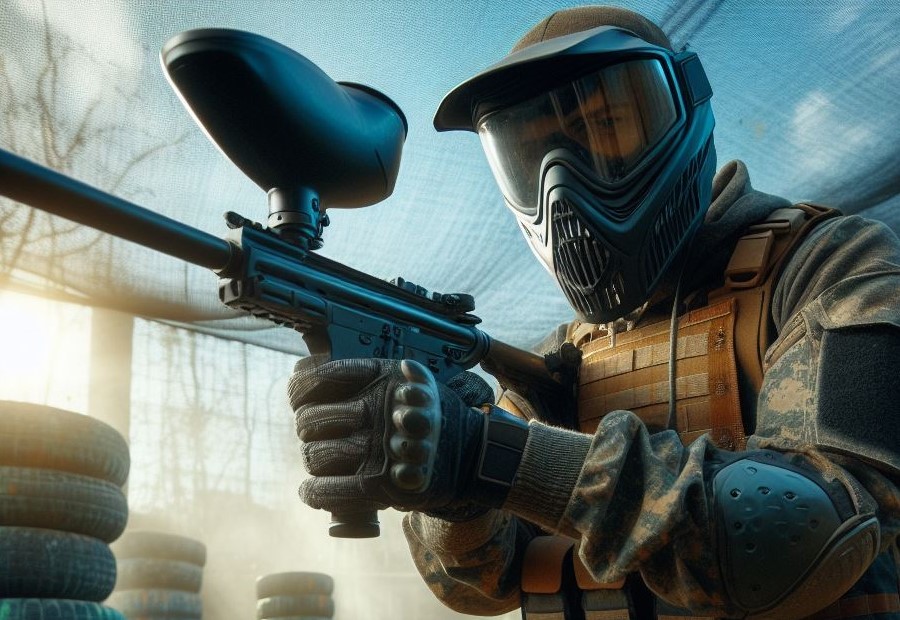
Upgrading the Marker
In order to upgrade a paintball marker and increase its BPS (balls per second) rate, follow these steps:
- Replace the stock barrel with a high-performance barrel. This will enhance accuracy and efficiency, resulting in faster shots.
- Install an electronic trigger system. By upgrading to an electronic trigger, you can achieve a faster rate of fire compared to a mechanical trigger.
- Upgrade the bolt system. A lighter and smoother bolt can help improve the marker’s cycling speed and reduce drag, ultimately increasing BPS.
- Upgrade the air system. Opt for a high-pressure air tank instead of a CO2 tank to ensure a more consistent air supply, which will enhance the marker’s performance.
- Upgrade the hopper. Using a higher performance hopper with a faster feeding rate allows for smoother and more efficient loading of paintballs.
- Maintain regular cleaning and maintenance of your marker. Proper maintenance, including cleaning and lubricating the internal components, will optimize its performance and ensure consistent BPS.
By following these steps, you can significantly improve your marker’s BPS and enhance your overall paintball experience. Remember to always adhere to safety guidelines and regulations while working on your marker.
Using a Higher Performance Hopper
When it comes to improving the BPS (balls per second) of a paintball marker, incorporating a higher performance hopper can make a significant difference. Here are some steps to make the most out of a higher performance hopper:
- Choose a high-capacity hopper: Opt for a hopper that has the ability to hold a large quantity of paintballs to allow for continuous feeding without the need for constant reloading.
- Consider an electronic hopper: Electronic hoppers utilize a motorized mechanism to feed the paintballs into the marker. This ensures a consistent and rapid feed rate, resulting in a higher BPS.
- Upgrade to a force-fed hopper: Force-fed hoppers take advantage of agitation or a paddle system to forcefully feed the paintballs into the marker, preventing any breaks or jams. This reliable feeding mechanism increases the BPS and overall performance.
- Maintain the hopper properly: Keep the hopper clean and free of any debris to maintain optimal performance. Regularly inspect and replace any worn or damaged parts to prevent any feeding issues.
- Use high-quality paintballs: Investing in paintballs that are of superior quality and have a consistent size and shape will prevent any feeding problems and ensure smooth and reliable feeding through the hopper.
By following these steps and utilizing a higher performance hopper, you can enhance the BPS of your paintball marker, resulting in improved firing speed and efficiency during gameplay.
Utilizing High-Pressure Air Sources
To maximize the BPS (balls per second) of a paintball marker, it is crucial to utilize high-pressure air sources. By using high-pressure air tanks instead of CO2 cartridges, you can achieve this.
These tanks provide a more stable and constant air supply, resulting in improved performance and accuracy.
Operating at pressures around 3,000 to 4,500 psi, these tanks ensure a consistent and powerful release of air, propelling the paintball with greater force and speed.
In addition to the tank, the paintball marker’s regulator plays a vital role in utilizing high-pressure air sources. It reduces the tank’s high pressure to a lower, more manageable level for the marker.
By properly adjusting the regulator, players can optimize the air flow and ensure the marker operates at its peak efficiency.
However, it is important to note that using high-pressure air sources requires proper maintenance and care.
Regularly inspecting and servicing the tank and regulator is crucial to avoid malfunctions or potential safety risks.
Safety Considerations for High BPS
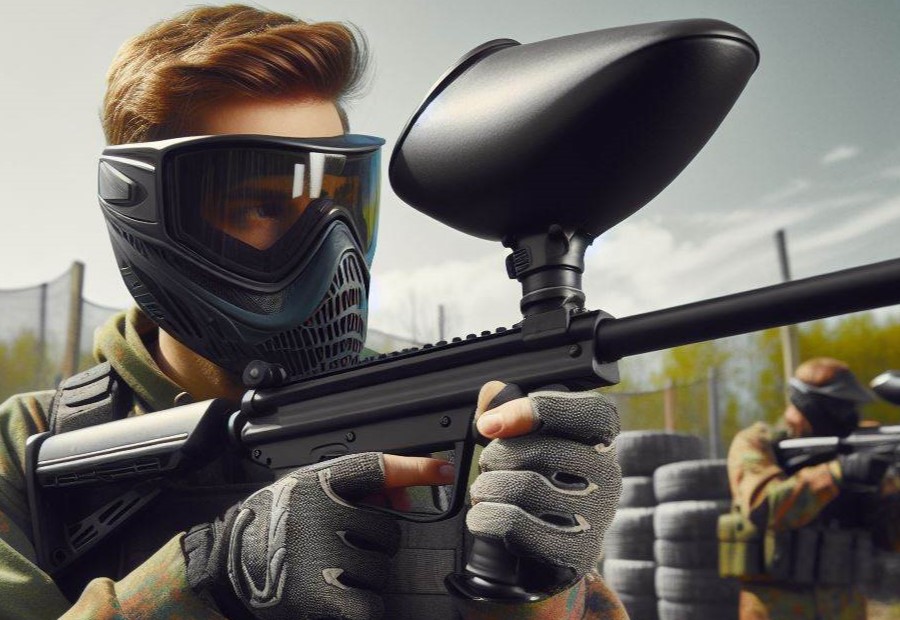
Safety considerations for high BPS (balls per second) are crucial to ensure the well-being of both players and spectators.
- It is essential to prioritize safety when participating in paintball at high BPS (balls per second). Wearing proper protective gear, such as a full-face mask, goggles, and other equipment, is crucial to safeguard against accidental injuries. It is important to ensure that this equipment meets industry safety standards and provides adequate protection.
- To further minimize the risk of being hit by paintballs traveling at high speeds, it is important to maintain a safe distance from others. This distance should be in compliance with the recommended guidelines provided by the game organizers.
- Strictly adhering to the rules and regulations set by the paintball field or game organizers is of utmost importance. These rules may include restrictions on shooting rates or designated safe zones where players can remove their masks.
- Responsible shooting practices are vital for safety. This includes controlling the speed of your paintball marker and avoiding excessive firing rates. It is essential to have your marker properly calibrated and regularly inspected to prevent any mechanical issues that could pose safety hazards.
- Being alert and aware on the field is crucial. This involves maintaining situational awareness, keeping an eye out for other players, and potential obstacles. Effective communication with teammates and clear signals can also help reduce the risk of accidents.
Frequently Asked Questions
What is a paintball marker’s BPS?
The BPS (balls per second) refers to the rate at which a paintball marker can shoot paintballs. It is a measurement of how many paintballs the marker can fire in one second.
Can a paintball marker achieve a firing rate of exactly 12.5 bps?
No, achieving an exact firing rate of 12.5 bps is not possible due to the limitations of paintball markers.
The markers are designed to operate at a maximum firing rate, typically 15 bps, and can be adjusted to shoot at a rate close to 12.5 bps by limiting the flow of gas through the firing solenoid or valve.
Why are some markers set to a firing rate cap of 12.5 bps?
Some markers may have a firing rate cap set at 12.5 bps to comply with certain regulations or tournament rules.
This ensures fair play and prevents players from gaining an unfair advantage with higher firing rates.
What factors can affect the actual firing rate of a paintball marker?
Factors such as temperature, humidity, and the condition of the marker can affect its performance and result in slight variations in the actual firing rate. These factors can impact the marker’s internal mechanism and the flow of gas.
Can all types of paintball markers achieve a firing rate of 12.5 bps?
Not all types of paintball markers can achieve a firing rate of 12.5 bps. Some markers, particularly starter markers or blow back markers, may have limitations that prevent them from reaching higher firing rates.
Higher-end tournament markers and mid-level markers offer higher rates of fire and access to more advanced features.
How can the firing rate of a paintball marker be adjusted?
The firing rate of a paintball marker can be adjusted using a programmable board or chip within the marker. This allows players to customize their firing rate within certain limits by adjusting the flow of gas through the firing solenoid or valve.

